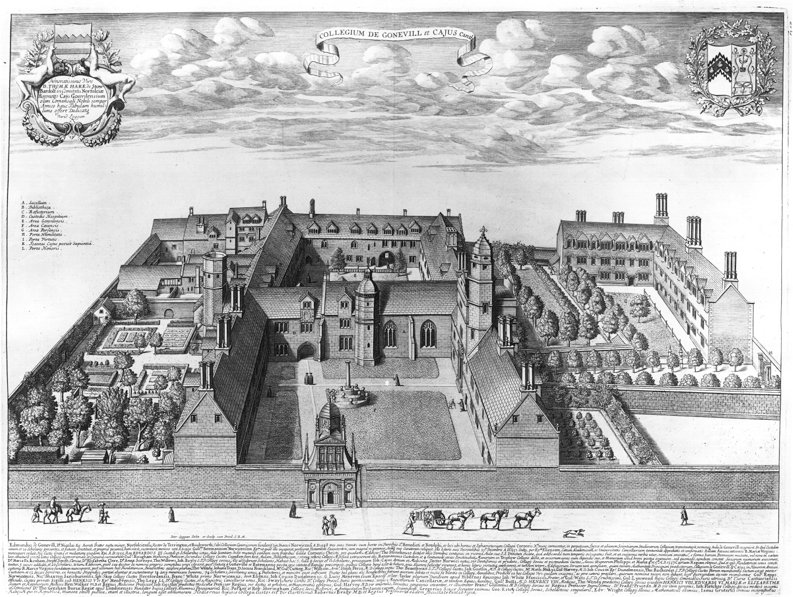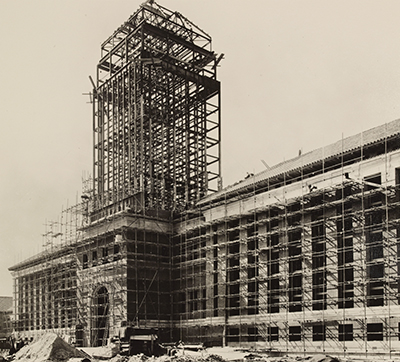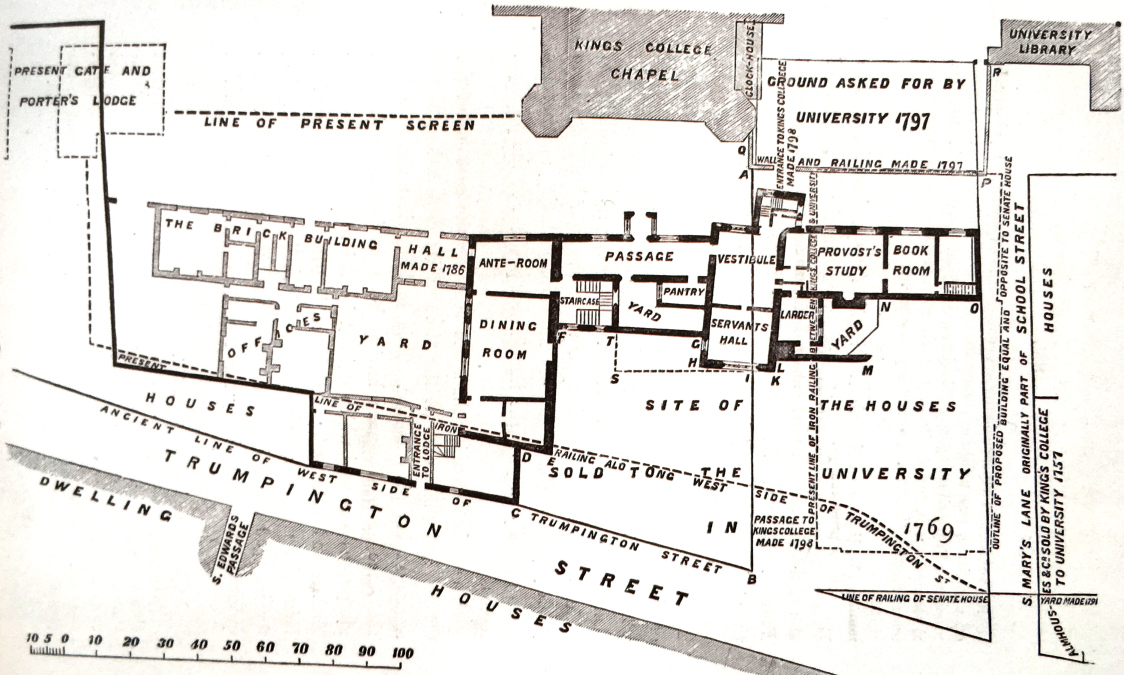|
West Road, Cambridge
West Road is located in western Cambridge, England. It links Grange Road to the west with Queen's Road to the east. The road is north of Sidgwick Avenue and the Sidgwick Site, a major site of the University of Cambridge, currently under redevelopment. Facilities on West Road include the Cambridge University Faculty of Law, the Faculty of Music, the Faculty of English and the Department of Anglo-Saxon, Norse and Celtic, and the West Road Concert Hall. To the north of West Road are King's College School, associated with King's College, and the Cambridge University Library. There are also tennis courts here. There are a number of University of Cambridge colleges and buildings located off West Road: * Harvey Court, |
Sidgwick Site - Geograph , a site of the University of Cambridge
{{disambig, geo, s ...
Sidgwick may refer to: * Mary Sidgwick Benson (1841–1918), English hostess and wife of Edward Benson, the Archbishop of Canterbury * Eleanor Mildred Sidgwick (1845–1936), English activist for higher education of women and wife of Henry Sidgwick * Henry Sidgwick (1838–1900), English philosopher * Nevil Sidgwick (1873–1952), English chemist * Robert Sidgwick (1851–1934), English cricketer * Arthur Sidgwick (1840–1920), English classical scholar and schoolteacher See also * Sedgewick (other) * Sedgwick (other) * Sidgwick & Jackson, an imprint of the publishing company Pan Macmillan * Sidgwick Avenue, a road in Cambridge, England * Sidgwick Site The Sidgwick Site is one of the largest sites within the University of Cambridge, England. Overview and history The Sidgwick Site is located on the western side of Cambridge city centre, near the Backs. The site is north of Sidgwick Avenue an ... [...More Info...] [...Related Items...] OR: [Wikipedia] [Google] [Baidu] |
Faculty Of English, University Of Cambridge
The Faculty of English is a constituent part of the University of Cambridge. It was founded in 1914 as a Tripos within the Faculty of Medieval and Modern Languages. It could be studied only as a 'Part I' of a degree course, alongside a 'Part II' either in medieval languages or from another Tripos. In 1926, the course became a distinct Faculty. The undergraduate degree course of 'Cambridge English', as well as the Faculty as a whole, is known for its distinctive focus on close reading (called Practical criticism), first championed by I. A. Richards and then later by William Empson and F. R. Leavis. Since the course was founded in 1926, Practical Criticism, Tragedy and Shakespeare have been mandatory parts of the course; the English Moralists paper (now renamed the Ethical Imagination) has also remained as an optional paper. In the present day, its research focus is wide ranging: from Old English literature through to contemporary, and also associated themes such as digital humanit ... [...More Info...] [...Related Items...] OR: [Wikipedia] [Google] [Baidu] |
Selwyn College, Cambridge
Selwyn College, Cambridge (formally Selwyn College in the University of Cambridge) is a constituent college of the University of Cambridge. The college was founded in 1882 by the Selwyn Memorial Committee in memory of George Augustus Selwyn (1809–1878), the first Bishop of New Zealand (1841–1868), and subsequently Bishop of Lichfield (1868–1878). Its main buildings consist of three courts built of stone and brick (Old Court, Ann's Court, and Cripps Court). There are several secondary buildings, including adjacent townhouses and lodges serving as student hostels on Grange Road, West Road and Sidgwick Avenue. The college has some 60 fellows and 110 non-academic staff. In 2019, Selwyn was ranked eighth on the Tompkins Table of Cambridge colleges in order of undergraduates' performances in examinations, having been first in 2008. The college was ranked 16th out of 30 in an assessment of college wealth conducted by the student newspaper '' Varsity'' in November 2006. [...More Info...] [...Related Items...] OR: [Wikipedia] [Google] [Baidu] |
St Catharine's College, Cambridge
St Catharine's College is a constituent college of the University of Cambridge. Founded in 1473 as Katharine Hall, it adopted its current name in 1860. The college is nicknamed "Catz". The college is located in the historic city-centre of Cambridge, and lies just south of King's College and across the street from Corpus Christi College. The college is notable for its open court (rather than closed quadrangle) that faces towards Trumpington Street. St Catharine's is unique in being the only Oxbridge college founded by the serving head of another college. The college community is moderately sized, consisting of approximately 70 fellows, 150 graduate students, and 410 undergraduates. History Foundation Robert Woodlark, Provost of King’s College, had begun preparations for the founding of a new college as early as 1459 when he bought tenements on which the new college could be built. The preparation cost him a great deal of his private fortune (he was suspected of divert ... [...More Info...] [...Related Items...] OR: [Wikipedia] [Google] [Baidu] |
Gonville And Caius College, Cambridge
Gonville and Caius College, often referred to simply as Caius ( ), is a constituent college of the University of Cambridge in Cambridge, England. Founded in 1348, it is the fourth-oldest of the University of Cambridge's 31 colleges and one of the wealthiest. The college has been attended by many students who have gone on to significant accomplishment, including fifteen Nobel Prize winners, the second-highest of any Oxbridge college after Trinity College, Cambridge. The college has long historical associations with the teaching of medicine, especially due to its prominent alumni in the medical profession. It also has globally-recognized and prestigious academic programmes in law, economics, English literature, and history. Famous Gonville and Caius alumni include physicians John Caius (who gave the college the caduceus in its insignia) and William Harvey. Other alumni in the sciences include Francis Crick (joint discoverer of the structure of DNA with James Watson), James Ch ... [...More Info...] [...Related Items...] OR: [Wikipedia] [Google] [Baidu] |
Tennis Court
A tennis court is the venue where the sport of tennis is played. It is a firm rectangular surface with a low net stretched across the centre. The same surface can be used to play both doubles and singles matches. A variety of surfaces can be used to create a tennis court, each with its own characteristics which affect the playing style of the game. Dimensions The dimensions of a tennis court are defined and regulated by the International Tennis Federation (ITF) governing body and are written down in the annual 'Rules of Tennis' document. The court is long. Its width is for singles matches and for doubles matches. The service line is from the net. Additional clear space around the court is needed in order for players to reach overrun balls for a total of wide and long. A net is stretched across the full width of the court, parallel with the baselines, dividing it into two equal ends. The net is high at the posts, and high in the center. The net posts are outside the d ... [...More Info...] [...Related Items...] OR: [Wikipedia] [Google] [Baidu] |
Cambridge University Library
Cambridge University Library is the main research library of the University of Cambridge. It is the largest of the over 100 libraries within the university. The Library is a major scholarly resource for the members of the University of Cambridge and external researchers. It is often referred to within the university as the UL. Thirty three faculty and departmental libraries are associated with the University Library for the purpose of central governance and administration, forming "Cambridge University Libraries". Cambridge University Library is one of the six legal deposit libraries under UK law. The Library holds approximately 9 million items (including maps and sheet music) and, through legal deposit, purchase and donation it receives around 100,000 items every year. The University Library is unique among the legal deposit libraries in keeping a large proportion of its material on open access and in allowing some categories of reader to borrow from its collections. Its or ... [...More Info...] [...Related Items...] OR: [Wikipedia] [Google] [Baidu] |
King's College, Cambridge
King's College is a constituent college of the University of Cambridge. Formally The King's College of Our Lady and Saint Nicholas in Cambridge, the college lies beside the River Cam and faces out onto King's Parade in the centre of the city. King's was founded in 1441 by King Henry VI soon after he had founded its sister institution at Eton College. Initially, King's accepted only students from Eton College. However, the king's plans for King's College were disrupted by the Wars of the Roses and the resultant scarcity of funds, and then his eventual deposition. Little progress was made on the project until 1508, when King Henry VII began to take an interest in the college, probably as a political move to legitimise his new position. The building of the college's chapel, begun in 1446, was finished in 1544 during the reign of Henry VIII. King's College Chapel is regarded as one of the finest examples of late English Gothic architecture. It has the world's largest fan vaul ... [...More Info...] [...Related Items...] OR: [Wikipedia] [Google] [Baidu] |
King's College School, Cambridge
King's College School is a coeducational independent preparatory school for children aged 4 to 13 in Cambridge, England, situated on West Road off Grange Road, west of the city centre. It was founded to educate the choristers in the King's College Choir during the 15th century. Although no longer located on College grounds, it remains an integral part of the Chapel's musical tradition and is still governed by and receives some funding from the College. The school is part of the same historic foundation as Eton College. The most recent full integrated Independent Schools Inspectorate (ISI) inspection awarded the grade "excellent" in all 9 categories. History King's College was founded in 1441 by King Henry VI. By 1447 the full complement of 16 choristers had been recruited to sing in the chapel. They were likely educated by a fellow until the appointment of the first Informator Chorustarum (Master over the Choristers) in 1456, Robert Brantham. The existence of dedicated scho ... [...More Info...] [...Related Items...] OR: [Wikipedia] [Google] [Baidu] |
Department Of Anglo-Saxon, Norse And Celtic
The Department of Anglo-Saxon, Norse and Celtic (ASNC or, informally, ASNaC) is one of the constituent departments of the University of Cambridge, and focuses on the history, material culture, languages and literatures of the various peoples who inhabited Britain, Ireland and the extended Scandinavian world in the early Middle Ages (5th century to 12th century). It is based on the second floor of the Faculty of English at 9 West Road. In Cambridge University jargon, its students are called ''ASNaCs''. It remains the only university faculty or department in the world to focus entirely on the early Middle Ages. Name The name ''Anglo-Saxon, Norse and Celtic'' dates to 1971, when the Department of Anglo-Saxon and Kindred Studies was renamed.E. S. Leedham-Green, ''A Concise History of the University of Cambridge'' (Cambridge: Cambridge University Press, 1996), pp. 226-27. The acronym ''ASNC'' or ''ASNaC'' is pronounced //, and originally denoted members of the ASNC Society rather ... [...More Info...] [...Related Items...] OR: [Wikipedia] [Google] [Baidu] |
Faculty Of Music, Cambridge
The University of Cambridge was the first institution in the world to award a dedicated Bachelor of Music degree. The Faculty of Music was established in 1947, and has this since grown into an academic centre covering all the aspects of study and research within in music. The most recent Research Assessment Exercise (2008) judged research at the Faculty to be in the highest possible category (4*) for 45% of the faculty member's research output. According to The Guardian's University Guide 2013, the Faculty has the highest ratio of staff to students in any of the top-10 institutions in the country where one can study music in the UK. Famous current and past members of the faculty The list includes some of the musicologists, composers and musicians who are or have been active at the faculty: * Nicholas Cook * Ian Cross * Ruth Davis * Martin Ennis * Katharine Ellis * Iain Fenlon * Marina Frolova-Walker * Alexander Goehr * Sarah Hawkins * Christopher Hogwood * Robin Holloway * Jo ... [...More Info...] [...Related Items...] OR: [Wikipedia] [Google] [Baidu] |
Law Faculty University Of Cambridge
Law is a set of rules that are created and are enforceable by social or governmental institutions to regulate behavior,Robertson, ''Crimes against humanity'', 90. with its precise definition a matter of longstanding debate. It has been variously described as a science and as the art of justice. State-enforced laws can be made by a group legislature or by a single legislator, resulting in statutes; by the executive through decrees and regulations; or established by judges through precedent, usually in common law jurisdictions. Private individuals may create legally binding contracts, including arbitration agreements that adopt alternative ways of resolving disputes to standard court litigation. The creation of laws themselves may be influenced by a constitution, written or tacit, and the rights encoded therein. The law shapes politics, economics, history and society in various ways and serves as a mediator of relations between people. Legal systems vary between jurisdictions, ... [...More Info...] [...Related Items...] OR: [Wikipedia] [Google] [Baidu] |


%2C_by_Mason_&_Co..jpg)




